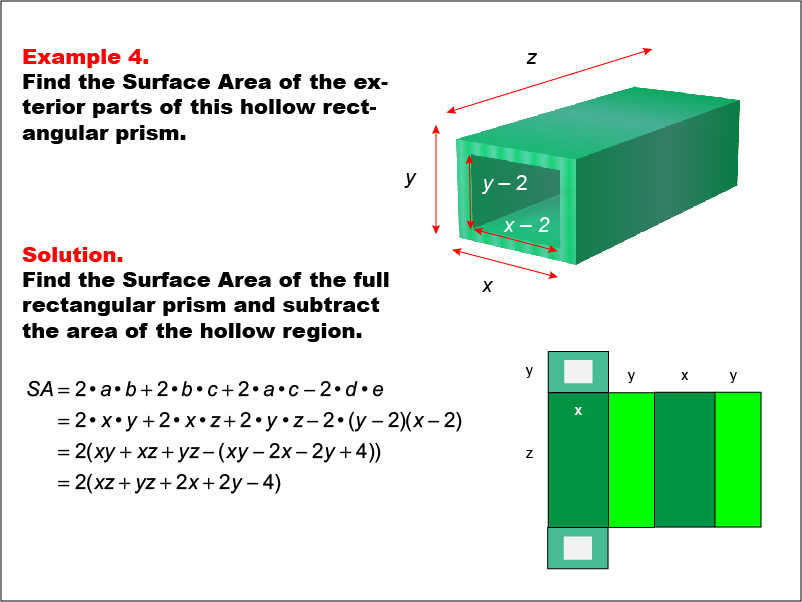
Display Title
Math Example--Area and Perimeter--Surface Area: Example 4
Display Title
Math Example--Area and Perimeter--Surface Area: Example 4

Topic
Surface Area
Description
This example presents a general formula for calculating the surface area of a hollow rectangular prism. The outer dimensions are represented by x, y, and z, while the hollow dimensions are represented by (y - 2) and (x - 2). The surface area is determined by subtracting the hollow region's surface area from that of the full rectangular prism, resulting in the formula SA = 2(xz + yz + 2x + 2y - 4).
Understanding surface area calculations for complex shapes is crucial in advanced mathematics and its applications. This collection of examples helps teach the topic by presenting progressively challenging scenarios, allowing students to apply and extend their knowledge of basic surface area principles to more sophisticated problems.
Engaging with multiple worked-out examples is vital for students to fully comprehend advanced surface area calculations. Each example builds upon previous concepts while introducing new complexities, helping students develop critical thinking skills and the ability to approach novel geometric problems with confidence.
Teacher's Script: In this example, we're exploring a generalized formula for the surface area of a hollow rectangular prism. Notice how we use variables to represent dimensions, making our formula applicable to various sizes. As we work through this, think about how this general approach relates to the specific examples we've seen before. This type of thinking will be invaluable as you encounter more complex geometric problems in the future.
For a complete collection of math examples related to Surface Area click on this link: Math Examples: Surface Area Collection.
| Common Core Standards | CCSS.MATH.CONTENT.7.G.B.6 |
|---|---|
| Grade Range | 6 - 8 |
| Curriculum Nodes |
Geometry • Surface Area and Volume • Surface Area |
| Copyright Year | 2013 |
| Keywords | surface area |